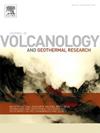Insights on the multi-scale topographic features of Mt. Etna volcano (Italy)
IF 2.3
3区 地球科学
Q2 GEOSCIENCES, MULTIDISCIPLINARY
Journal of Volcanology and Geothermal Research
Pub Date : 2025-09-19
DOI:10.1016/j.jvolgeores.2025.108443
引用次数: 0
Abstract
The terrain analysis of volcanic landforms provides valuable qualitative and quantitative insights into the factors that shape volcanoes. Using different terrain analysis approaches, this study reconstructs and describes the multi-scale topographic features of Mt. Etna Volcano (Italy). Specifically, the first order shape of the volcano, approximating the large-scale volcanic edifice, is characterized through the analytical fitting of contour lines using an elliptical geometry. The geometric properties of this modelled surface align with the evolutionary phases of Mt. Etna over the past 300 kyr. The modelled surface also serves as a two-dimensional filter: the residual topography, obtained by its removal from the actual topography, reveals second-order topographic features. The residual topography is then opportunely resampled and analysed using the wavelet technique along slope-parallel and base-parallel sections. This analysis reveals zones with different wavelength behaviours that correlate with the residual topographic anomalies. The spatial arrangement of this anomalies around the flanks of the volcano aligns with known volcanic features of Mt. Etna, such as the “Ellittico” volcano and its caldera depression, the large volcano-tectonic depression of the “Bove” valley, and the unstable eastern flank. A few zones do not correspond to any recognized features and may suggest the occurrence of buried structures, offering potential targets for future investigation. This study demonstrates that the wavelet-based technique is a valuable tool for characterizing and classifying volcanic landforms.
埃特纳火山(意大利)多尺度地形特征研究
火山地貌的地形分析为形成火山的因素提供了有价值的定性和定量的见解。利用不同的地形分析方法,对意大利埃特纳火山的多尺度地形特征进行了重建和描述。具体来说,火山的一阶形状近似于大规模的火山大厦,通过使用椭圆几何的等高线的解析拟合来表征。这个模型表面的几何特性与埃特纳火山在过去300年里的演化阶段一致。建模表面还充当二维滤波器:通过从实际地形中去除残余地形而获得的残余地形揭示了二阶地形特征。然后利用小波技术沿坡平行和基平行剖面对残余地形进行重新采样和分析。该分析揭示了与残余地形异常相关的具有不同波长行为的区域。火山侧翼周围这种异常的空间排列与埃特纳火山已知的火山特征一致,如“ellitico”火山及其破火山口洼地,“Bove”山谷的大型火山构造洼地,以及不稳定的东翼。一些区域不符合任何已知的特征,可能表明存在埋藏结构,为未来的调查提供了潜在的目标。研究结果表明,基于小波变换的火山地貌特征识别和分类是一种有价值的工具。
本文章由计算机程序翻译,如有差异,请以英文原文为准。
求助全文
约1分钟内获得全文
求助全文
来源期刊
CiteScore
5.90
自引率
13.80%
发文量
183
审稿时长
19.7 weeks
期刊介绍:
An international research journal with focus on volcanic and geothermal processes and their impact on the environment and society.
Submission of papers covering the following aspects of volcanology and geothermal research are encouraged:
(1) Geological aspects of volcanic systems: volcano stratigraphy, structure and tectonic influence; eruptive history; evolution of volcanic landforms; eruption style and progress; dispersal patterns of lava and ash; analysis of real-time eruption observations.
(2) Geochemical and petrological aspects of volcanic rocks: magma genesis and evolution; crystallization; volatile compositions, solubility, and degassing; volcanic petrography and textural analysis.
(3) Hydrology, geochemistry and measurement of volcanic and hydrothermal fluids: volcanic gas emissions; fumaroles and springs; crater lakes; hydrothermal mineralization.
(4) Geophysical aspects of volcanic systems: physical properties of volcanic rocks and magmas; heat flow studies; volcano seismology, geodesy and remote sensing.
(5) Computational modeling and experimental simulation of magmatic and hydrothermal processes: eruption dynamics; magma transport and storage; plume dynamics and ash dispersal; lava flow dynamics; hydrothermal fluid flow; thermodynamics of aqueous fluids and melts.
(6) Volcano hazard and risk research: hazard zonation methodology, development of forecasting tools; assessment techniques for vulnerability and impact.

 求助内容:
求助内容: 应助结果提醒方式:
应助结果提醒方式:


